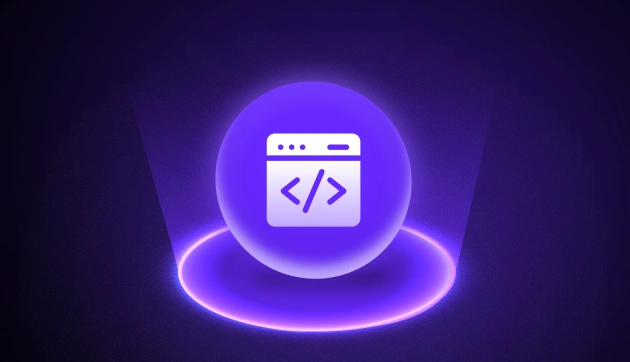
The Evolution of Microservices Over Monolithic Architecture
Feb 10, 2025 3 Min Read 567 Views
(Last Updated)
As technology continues to evolve, how do software architectures keep pace with the growing demands of businesses and users? For years, monolithic architecture stood as the foundation of most software applications, offering simplicity and straightforward deployment. However, as applications became more complex and user needs increased, the limitations of monolithic systems became clear. This led to the rise of microservices—an architectural shift that promises greater scalability, flexibility, and faster development cycles. In this blog, we’ll explore how the evolution from monolithic to microservices has reshaped the software development landscape and why it’s become the preferred choice for many organizations.
Table of contents
- Understanding Monolithic Architecture
- Key Characteristics of Monolithic Architecture:
- Advantages of Monolithic Architecture:
- Challenges of Monolithic Architecture:
- Future-Proof Your Development Skills: Full-Stack Development
- The Rise of Microservices
- Key Characteristics of Microservices Architecture:
- Advantages of Microservices:
- Challenges of Microservices:
- Evolutionary Drivers
- Real-World Adoption
- Wrapping up
Understanding Monolithic Architecture
Monolithic architecture refers to a traditional way of building software applications where all components are interconnected and interdependent. In a monolithic system, the user interface (UI), business logic, and data access layers are bundled together into a single, self-contained unit.
Key Characteristics of Monolithic Architecture:
- Tightly Coupled: All parts of the application are tightly integrated, meaning changes in one part can significantly impact others.
- Single Codebase: There is typically one codebase for the entire application, making it easier to develop at the outset but harder to manage as the application grows.
- Resource Intensive: Scaling a monolithic application often means duplicating the entire system, which can be resource-intensive.
- Slower Development Cycles: Because everything is interconnected, deploying new features or updates can be slow and risky, as it may affect the entire application.
Advantages of Monolithic Architecture:
- Simplicity: Easier to develop, test, and deploy in the early stages of an application.
- Performance: Communication within a monolithic application is faster because it doesn’t rely on network calls between different services.
Challenges of Monolithic Architecture:
- Scalability Issues: Difficult to scale specific parts of the application independently.
- Maintenance Complexity: As the application grows, the codebase becomes large and difficult to manage.
- Limited Flexibility: Technology stack and development language are often chosen at the outset and hard to change later.
Future-Proof Your Development Skills: Full-Stack Development
To stay competitive in the evolving tech landscape, mastering full-stack development is essential. Understanding how to build scalable, flexible applications using both monolithic and microservices architectures is a key skill.
GUVI’s Full-Stack Development Course equips you with the hands-on experience needed to excel in both architectures. Start your journey with GUVI’s Full-Stack Development Course today!
The Rise of Microservices
As applications became more complex, the limitations of monolithic architecture became apparent. This led to the development of microservices architecture, which breaks down an application into smaller, loosely coupled services that can be developed, deployed, and scaled independently.
Key Characteristics of Microservices Architecture:
- Decoupled Services: Each service is a small, self-contained unit that focuses on a specific business function.
- Independent Deployment: Services can be developed, tested, and deployed independently, allowing for faster release cycles.
- Technology Diversity: Teams can choose the most appropriate technology stack for each service.
- Scalability: Individual services can be scaled independently, optimizing resource use.
Advantages of Microservices:
- Improved Scalability: Since services are decoupled, only the necessary components can be scaled.
- Faster Time-to-Market: Independent services allow for quicker iterations and more frequent releases.
- Resilience: If one service fails, it doesn’t necessarily bring down the entire system.
- Flexibility: Teams can use different programming languages, databases, and tools for different services.
Challenges of Microservices:
- Increased Complexity: Managing a large number of services requires a sophisticated orchestration strategy.
- Network Latency: Communication between services occurs over a network, which can introduce latency.
- Data Management: Distributed data management can be challenging, requiring strategies like eventual consistency.
- Operational Overhead: Monitoring, logging, and managing services at scale requires robust DevOps practices.
Evolutionary Drivers
Several factors drove the evolution from monolithic to microservices architecture:
- Demand for Scalability: As businesses grew, the need to scale specific parts of applications independently became critical.
- Agility in Development: The pressure to deliver new features faster and more frequently made microservices more attractive.
- Cloud-Native Environments: The rise of cloud computing, with its inherent scalability and flexibility, naturally aligned with microservices.
- Technological Advances: The emergence of containerization (e.g., Docker) and orchestration tools (e.g., Kubernetes) provided the necessary infrastructure to support microservices effectively.
Real-World Adoption
Many organizations, including tech giants like Netflix, Amazon, and Google, have adopted microservices architecture to overcome the limitations of monolithic systems. Netflix, for instance, transitioned from a monolithic architecture to microservices to handle its massive user base and the need for high availability and scalability.
Wrapping up
In the end, the shift from monolithic to microservices isn’t just about adopting a new technology; it’s about adapting to the ever-changing demands of the business world. Microservices offer significant advantages in scalability, flexibility, and resilience, making them ideal for complex applications in today’s fast-paced, cloud-first landscape. However, this architecture isn’t without its challenges—such as increased complexity and the need for robust management strategies.
While monolithic systems still have their place, especially for smaller applications, the future of software development will likely revolve around microservices, as they provide the agility and adaptability that businesses require to stay ahead in a competitive environment. For organizations ready to embrace this evolution, the road ahead promises greater efficiency and innovation in their software development journey.
































Did you enjoy this article?